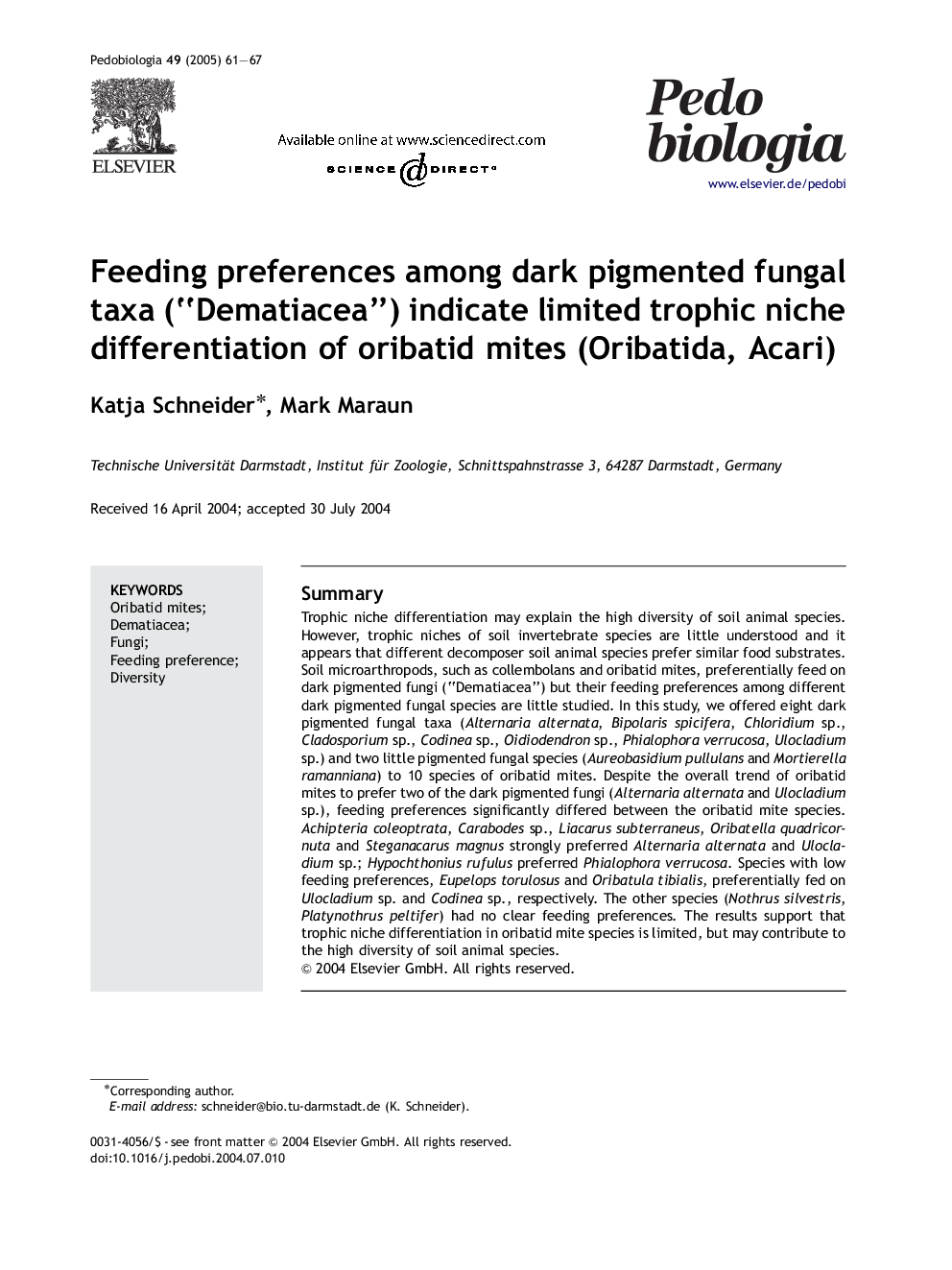| Article ID | Journal | Published Year | Pages | File Type |
|---|---|---|---|---|
| 10878721 | Pedobiologia | 2005 | 7 Pages |
Abstract
Trophic niche differentiation may explain the high diversity of soil animal species. However, trophic niches of soil invertebrate species are little understood and it appears that different decomposer soil animal species prefer similar food substrates. Soil microarthropods, such as collembolans and oribatid mites, preferentially feed on dark pigmented fungi (“Dematiacea”) but their feeding preferences among different dark pigmented fungal species are little studied. In this study, we offered eight dark pigmented fungal taxa (Alternaria alternata, Bipolaris spicifera, Chloridium sp., Cladosporium sp., Codinea sp., Oidiodendron sp., Phialophora verrucosa, Ulocladium sp.) and two little pigmented fungal species (Aureobasidium pullulans and Mortierella ramanniana) to 10 species of oribatid mites. Despite the overall trend of oribatid mites to prefer two of the dark pigmented fungi (Alternaria alternata and Ulocladium sp.), feeding preferences significantly differed between the oribatid mite species. Achipteria coleoptrata, Carabodes sp., Liacarus subterraneus, Oribatella quadricornuta and Steganacarus magnus strongly preferred Alternaria alternata and Ulocladium sp.; Hypochthonius rufulus preferred Phialophora verrucosa. Species with low feeding preferences, Eupelops torulosus and Oribatula tibialis, preferentially fed on Ulocladium sp. and Codinea sp., respectively. The other species (Nothrus silvestris, Platynothrus peltifer) had no clear feeding preferences. The results support that trophic niche differentiation in oribatid mite species is limited, but may contribute to the high diversity of soil animal species.
Related Topics
Life Sciences
Agricultural and Biological Sciences
Animal Science and Zoology
Authors
Katja Schneider, Mark Maraun,
